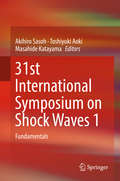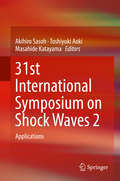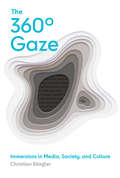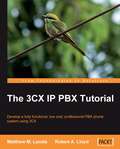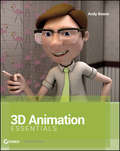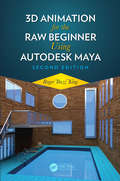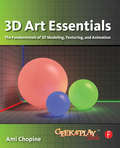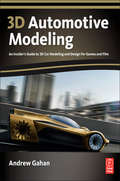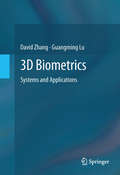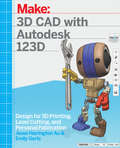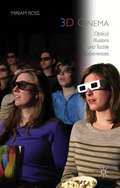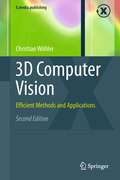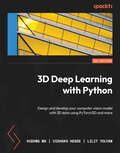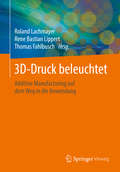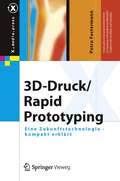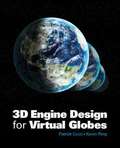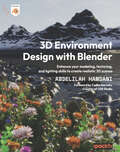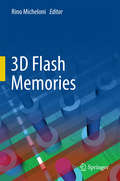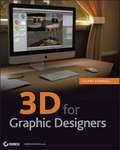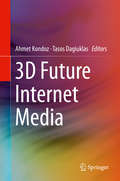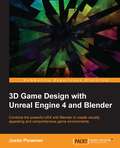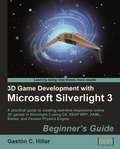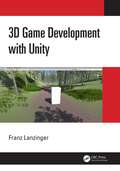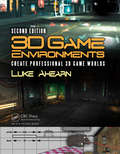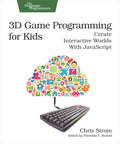- Table View
- List View
31st International Symposium on Shock Waves 1: Fundamentals
by Akihiro Sasoh Toshiyuki Aoki Masahide KatayamaThis is the first volume of a two volume set which presents the results of the 31st International Symposium on Shock Waves (ISSW31), held in Nagoya, Japan in 2017. It was organized with support from the International Shock Wave Institute (ISWI), Shock Wave Research Society of Japan, School of Engineering of Nagoya University, and other societies, organizations, governments and industry. The ISSW31 focused on the following areas: Blast waves, chemical reacting flows, chemical kinetics, detonation and combustion, ignition, facilities, diagnostics, flow visualization, spectroscopy, numerical methods, shock waves in rarefied flows, shock waves in dense gases, shock waves in liquids, shock waves in solids, impact and compaction, supersonic jet, multiphase flow, plasmas, magnetohyrdrodynamics, propulsion, shock waves in internal flows, pseudo-shock wave and shock train, nozzle flow, re-entry gasdynamics, shock waves in space, Richtmyer-Meshkov instability, shock/boundary layer interaction, shock/vortex interaction, shock wave reflection/interaction, shock wave interaction with dusty media, shock wave interaction with granular media, shock wave interaction with porous media, shock wave interaction with obstacles, supersonic and hypersonic flows, sonic boom, shock wave focusing, safety against shock loading, shock waves for material processing, shock-like phenomena, and shock wave education. These proceedings contain the papers presented at the symposium and serve as a reference for the participants of the ISSW 31 and individuals interested in these fields.
31st International Symposium on Shock Waves 2: Applications
by Akihiro Sasoh Toshiyuki Aoki Masahide KatayamaThis is the second volume of a two volume set which presents the results of the 31st International Symposium on Shock Waves (ISSW31), held in Nagoya, Japan in 2017. It was organized with support from the International Shock Wave Institute (ISWI), Shock Wave Research Society of Japan, School of Engineering of Nagoya University, and other societies, organizations, governments and industry. The ISSW31 focused on the following areas: Blast waves, chemical reacting flows, chemical kinetics, detonation and combustion, ignition, facilities, diagnostics, flow visualization, spectroscopy, numerical methods, shock waves in rarefied flows, shock waves in dense gases, shock waves in liquids, shock waves in solids, impact and compaction, supersonic jet, multiphase flow, plasmas, magnetohyrdrodynamics, propulsion, shock waves in internal flows, pseudo-shock wave and shock train, nozzle flow, re-entry gasdynamics, shock waves in space, Richtmyer-Meshkov instability, shock/boundary layer interaction, shock/vortex interaction, shock wave reflection/interaction, shock wave interaction with dusty media, shock wave interaction with granular media, shock wave interaction with porous media, shock wave interaction with obstacles, supersonic and hypersonic flows, sonic boom, shock wave focusing, safety against shock loading, shock waves for material processing, shock-like phenomena, and shock wave education. These proceedings contain the papers presented at the symposium and serve as a reference for the participants of the ISSW 31 and individuals interested in these fields.
The 360° Gaze: Immersions in Media, Society, and Culture
by Christian StieglerA comprehensive study of the pervasive role of immersion and immersive media in postmodern culture, from a humanities and social sciences perspective.Virtual reality, augmented reality, mixed reality, and other modes of digitally induced immersion herald a major cultural and economic shift in society. Most academic discussions of immersion and immersive media have focused on the technological aspects. In The 360° Gaze, Christian Stiegler takes a humanities and social science approach, emphasizing the human implications of immersive media in postmodern culture. Examining characteristics common to all immersive experiences, he uncovers dominant metaphors, such as the rabbit hole, and prevailing ideologies. He raises fundamental questions about opportunities and risks associated with immersion, as well as the potential effects on individuals, communities, and societies.
The 3CX IP PBX Tutorial
by Robert Lloyd Matthew M. LandisA hands-on and practical tutorial that shows administrators how to implement and use 3CX and its range of functionality. Using real world experiences from the authors, you will learn tricks and tips that will help you develop and optimize your 3CX system. This book is for beginners who know nothing about 3CX or VoIP. It will guide them to set up a complete system. Advanced users will also gain insight from information on real-world hardware and software tips and tricks.
3D Animation Essentials
by Andy BeaneThe essential fundamentals of 3D animation for aspiring 3D artists3D is everywhere--video games, movie and television special effects, mobile devices, etc. Many aspiring artists and animators have grown up with 3D and computers, and naturally gravitate to this field as their area of interest. Bringing a blend of studio and classroom experience to offer you thorough coverage of the 3D animation industry, this must-have book shows you what it takes to create compelling and realistic 3D imagery. Serves as the first step to understanding the language of 3D and computer graphics (CG)Covers 3D animation basics: pre-production, modeling, animation, rendering, and post-productionDissects core 3D concepts including design, film, video, and gamesExamines what artistic and technical skills are needed to succeed in the industryOffers helpful real-world scenarios and informative interviews with key educators and studio and industry professionalsWhether you're considering a career in as a 3D artist or simply wish to expand your understanding of general CG principles, this book will give you a great overview and knowledge of core 3D Animation concepts and the industry.
3D Animation for the Raw Beginner Using Autodesk Maya 2e
by Roger King3D Animation for the Raw Beginner Using Autodesk Maya is a hands-on academic textbook as well as a do-it-yourself training manual for the individual animator. This second edition has been completely rewritten to take into account updates to Autodesk Maya, including Autodesk’s renderer, Arnold. It contains entirely new examples and tutorial lessons. All 612 images are in full color. The book directs the reader to the parts of Maya that must be mastered in order to create complete 3D projects, and thus it simplifies the process of taking on Maya’s vast and intricate interface, while giving the reader a firm foundation on which to build future knowledge of Maya. It also presents brief examples of other popular 3D applications and rendering engines. This principles-based, yet pragmatic book: Introduces the basic steps of the 3D modeling, materials, animation, lighting, and rendering processes. Presents clear and concise tutorials that link key concepts to practical techniques. Includes access to a webpage for the book: https://buzzking.com/AnimationTextbook/AnimationTextbook.html. On this webpage are videos that cover many of the lessons in the book, as well as video tutorials that present bonus material not included in the book. Frees instructors from the painstaking task of developing step-by-step examples to present Maya’s complex interface and basic capabilities. Boasts an easy-to-follow, tutorial-based learning style ideal for individual study by aspiring animators and do-it yourselfers. Roger "Buzz" King is a Professor Emeritus at the University of Colorado at Boulder, where he teaches 3D Animation for the Computer Science Department and the Alliance for Technology, Learning, and Society (ATLAS), an institute dedicated to the application of technology to the arts. Buzz is an independent 3D animator who serves on the board of directors of a 3D animation startup. Buzz has a B.A. in Mathematics from Occidental College, an M.S. and Ph.D. in Computer Science from the University of Southern California, and an M.Div. from the Iliff School of Theology. Key Features Introduces critical aspects of the 3D animation process Presents clear and concise tutorials that link key concepts to practical techniques Includes access to a dedicated Web site, http://3dbybuzz.com, featuring useful videos, lessons, and updates Frees instructors from developing step-by-step examples to present Maya’s complex interface and basic Boasts an easy-to-follow, hands-on learning style ideal for individual study by aspiring animators and do-ityourselfers
3D Art Essentials: The Fundamentals Of 3d Modeling, Texturing, And Animation
by Ami ChopineCreate high-quality 3D animations and models by using the basic concepts and principles of 3D art presented by GeekAtPlay.com's Ami Chopine. This handy studio reference breaks down the core concepts into easy-to-understand segments and teaches you the 'why' in addition to the 'how.' Using application agnostic step-by-step tutorials, this book teaches you how to model, pose, and texture your creations as well as scenery creation, animation, and rendering. Learn which applications are best for your needs and how you can get started making money in the 3D field. The companion website includes video tutorials, models, project files, and other resources. This book is endorsed by Daz3d.com and includes exclusive Daz3d models.
3d Automotive Modeling: An Insider's Guide to 3d Car Modeling and Design for Games and Film
by Andrew GahanMaster techniques from top automotive designers and world-class game developers with this insider's guide to designing and modeling 3D vehicles. With techniques demonstrated in 3ds Max, Maya, XSI, and Photoshop, "3D Automotive Modeling" starts with a fantastic series of hot concept designs and continues by offering a full hands-on modeling tutorial for each. Some of the very best designers and modelers from across the globe take you through their processes step-by-step, giving you the tips, tricks, and short-cuts that true professionals use. "3D Automotive Modeling" features tutorials from Honda, Toyota, and Mercedes-Benz designers, as well as modelers from Sony Computer Entertainment, Lucas Arts, and Simbin-artists who have worked on some of the biggest games in the industry, including the MotorStorm series. You will get: insider tips from a team of noted professionals, led by author Andrew Gahan, part of the award-winning game team behind the PlayStation 3 smash hit series, MotorStorm; all tutorial files, models, textures, blueprints, and concept images on the associated web site; and, access to a vibrant forum on the web site where you can discuss and share your work and get feedback from the pros.
3D Biometrics: Systems and Applications
by David Zhang Guangming LuAutomatic personal authentication using biometric information is becoming more essential in applications of public security, access control, forensics, banking, etc. Many kinds of biometric authentication techniques have been developed based on different biometric characteristics. However, most of the physical biometric recognition techniques are based on two dimensional (2D) images, despite the fact that human characteristics are three dimensional (3D) surfaces. Recently, 3D techniques have been applied to biometric applications such as 3D face, 3D palmprint, 3D fingerprint, and 3D ear recognition. This book introduces four typical 3D imaging methods, and presents some case studies in the field of 3D biometrics. This book also includes many efficient 3D feature extraction, matching, and fusion algorithms. These 3D imaging methods and their applications are given as follows: - Single view imaging with line structured-light: 3D ear identification - Single view imaging with multi-line structured-light: 3D palmprint authentication - Single view imaging using only 3D camera: 3D hand verification - Multi-view imaging: 3D fingerprint recognition 3D Biometrics: Systems and Applications is a comprehensive introduction to both theoretical issues and practical implementation in 3D biometric authentication. It will serve as a textbook or as a useful reference for graduate students and researchers in the fields of computer science, electrical engineering, systems science, and information technology. Researchers and practitioners in industry and R&D laboratories working on security system design, biometrics, immigration, law enforcement, control, and pattern recognition will also find much of interest in this book.
3D CAD with Autodesk 123D
by Emily Gertz Jesse Harrington AuIf you've arrived at a stage in your creative life where you're ready to do more with your computer, it's time to learn how to combine its power with new advances in computer-aided design (CAD) and fabrication to make something awesome--in three dimensions!<P><P> The free suite of Autodesk 123D software offers all the tools you need to capture or design three-dimensional objects and characters. This book tells you how to harness that power to print or fabricate just about anything you can imagine. Want to make something mechanical or structural that's based on precise measurements? 123D Design can help! Ready to create something cool based on a character, an organic shape, or something found in nature? 123D Catch, 123D Meshmixer, and 123D Sculpt+ will assist. Learn how to use these tools, plus 123D Make--perfect for prototyping designs you'll cut with a CNC mill--to take your creativity to a new level.An ideal book for Makers, hobbyists, students, artists, and designers (including beginners!), this book opens up the inexpensive world of personal fabrication to everyone.In 3D CAD with Autodesk 123D, you'll:Meet the classic "Stanford bunny" and learn to modify it with MeshmixerScan and 3D print anything around youDesign your own 3D-printed guitarFind models in the Sculpt+ community and make a skeleton!Build a birdhouse, prototype a playground, or create a statueLearn everything from basics to troubleshooting skillsGet started making right away
3D Cinema
by Miriam Ross3D Cinema: Optical Illusions and Tactile Experiences questions the common frameworks used for discussing 3D cinema, realism and spectacle, in order to fully understand the embodied and sensory dimensions of 3D cinema's unique visuality.
3D Computer Vision: Efficient Methods and Applications (X.media.publishing)
by Christian WöhlerThis indispensable text introduces the foundations of three-dimensional computer vision and describes recent contributions to the field. Fully revised and updated, this much-anticipated new edition reviews a range of triangulation-based methods, including linear and bundle adjustment based approaches to scene reconstruction and camera calibration, stereo vision, point cloud segmentation, and pose estimation of rigid, articulated, and flexible objects. Also covered are intensity-based techniques that evaluate the pixel grey values in the image to infer three-dimensional scene structure, and point spread function based approaches that exploit the effect of the optical system. The text shows how methods which integrate these concepts are able to increase reconstruction accuracy and robustness, describing applications in industrial quality inspection and metrology, human-robot interaction, and remote sensing.
3D Deep Learning with Python: Design and develop your computer vision model with 3D data using PyTorch3D and more
by Xudong Ma Vishakh Hegde Lilit YolyanVisualize and build deep learning models with 3D data using PyTorch3D and other Python frameworks to conquer real-world application challenges with easeKey FeaturesUnderstand 3D data processing with rendering, PyTorch optimization, and heterogeneous batchingImplement differentiable rendering concepts with practical examplesDiscover how you can ease your work with the latest 3D deep learning techniques using PyTorch3DBook DescriptionWith this hands-on guide to 3D deep learning, developers working with 3D computer vision will be able to put their knowledge to work and get up and running in no time.Complete with step-by-step explanations of essential concepts and practical examples, this book lets you explore and gain a thorough understanding of state-of-the-art 3D deep learning. You'll see how to use PyTorch3D for basic 3D mesh and point cloud data processing, including loading and saving ply and obj files, projecting 3D points into camera coordination using perspective camera models or orthographic camera models, rendering point clouds and meshes to images, and much more. As you implement some of the latest 3D deep learning algorithms, such as differential rendering, Nerf, synsin, and mesh RCNN, you'll realize how coding for these deep learning models becomes easier using the PyTorch3D library.By the end of this deep learning book, you'll be ready to implement your own 3D deep learning models confidently.What you will learnDevelop 3D computer vision models for interacting with the environmentGet to grips with 3D data handling with point clouds, meshes, ply, and obj file formatWork with 3D geometry, camera models, and coordination and convert between themUnderstand concepts of rendering, shading, and more with easeImplement differential rendering for many 3D deep learning modelsAdvanced state-of-the-art 3D deep learning models like Nerf, synsin, mesh RCNNWho this book is forThis book is for beginner to intermediate-level machine learning practitioners, data scientists, ML engineers, and DL engineers who are looking to become well-versed with computer vision techniques using 3D data.
3D-Druck beleuchtet: Additive Manufacturing auf dem Weg in die Anwendung
by Roland Lachmayer Rene Bastian Lippert Thomas FahlbuschDas vorliegende Buch zeigt einen Überblick über das breite Anwendungsfeld des Additive Manufacturing, mit dem Fokus auf den industriellen Einsatz unterschiedlicher Technologien. Nach der Beschreibung eines allgemeinen Grundverständnisses und der Einschätzung zur Nutzung von Additive Manufacturing Verfahren in der Produktentwicklung werden verschiedene Technologien hinsichtlich von Nachhaltigkeits-, Individualisierungs-, Qualifizierungs- und Gestaltungsaspekten analysiert. Dabei liegt der Fokus stets auf der Betrachtung der gesamten Prozesskette, vom Pre-Prozess über den In- und Post-Prozess bis hin zur Anwendung. Die abschließende Betrachtung von Sicherheitsmerkmalen des Additive Manufacturing resultiert in der Einschätzung zukünftiger Entwicklungen im Bereich des Additive Manufacturing.
3D-Druck/Rapid Prototyping: Eine Zukunftstechnologie - kompakt erklärt (X.media.press)
by Petra FastermannImmer mehr Kreative nutzen die Möglichkeit, eigene dreidimensionale Objekte in Kunststoff, Metall oder Keramik schnell und preisgünstig herstellen zu lassen. Der 3D-Druck ist eine revolutionäre Technologie, die dieVerwirklichung von Ideen ermöglicht. 3D-Drucker werden immer kleiner und leistungsstärker und damit bürotauglicher. Eine umfassende Beschreibung dieser Zukunftstechnologie bietet dieses praxisnahe und anwenderorientierte Buch. Dabei hilft es mit Tipps und Hinweisen bei der Auswahl des optimalen CAD-Programms und 3D-Druckers.
3D Engine Design for Virtual Globes
by Patrick Cozzi Kevin RingSupported with code examples and the authors’ real-world experience, this book offers the first guide to engine design and rendering algorithms for virtual globe applications like Google Earth and NASA World Wind. The content is also useful for general graphics and games, especially planet and massive-world engines. With pragmatic advice throughout, it is essential reading for practitioners, researchers, and hobbyists in these areas, and can be used as a text for a special topics course in computer graphics. Topics covered include: Rendering globes, planet-sized terrain, and vector data; Multithread resource management; Out-of-core algorithms; Shader-based renderer design.
3D Environment Design with Blender: Enhance your modeling, texturing, and lighting skills to create realistic 3D scenes
by Abdelilah Hamdani Carlos BarretoSave time and effort when building 3D scenes with this essential guide to creating stunning photorealistic 3D environments in BlenderKey FeaturesReveal modeling tricks to make your Blender 3D environments look realisticDiscover techniques to enhance the photorealism of your scenes while saving timeSet up realistic lighting in your scenes to make your environment look pleasing to the eyeBook DescriptionBlender is a powerful tool for creating all kinds of visual assets, but with such power comes complexity. Creating a photorealistic 3D scene seems like a Herculean task for more than 90% of 3D designers, but don't be discouraged! 3D Environment Design with Blender will get you up and running.This practical guide helps reduce the complexity of 3D environment design, advance your Blender skills, and produce lifelike scenes and animations in a time-efficient manner. You'll start by learning how to fix the most common mistakes 3D designers make with modeling and scale matching that stop them from achieving photorealism. Next, you'll understand the basics of realistic texturing, efficient unwrapping and achieving photorealistic lighting by turning an actual reference of a wood cabin into a realistic 3D scene. These skills will be used and expanded as you build a realistic 3D environment with natural assets and materials that you'll create from scratch. Once you've developed your natural environment, you'll advance to creating realistic render shots by applying cool camera features, and compositing tricks that will make your final render look photorealistic and pleasing to the eye.By the end of this book, you'll be able to implement modeling tricks and best practices to make your 3D environments look stunningly lifelike.What you will learnUnderstand how to avoid the most common modeling mistakes 3D designers makeCreate realistic landscapes using Blender's built-in A.N.T Landscape add-onBuild natural assets such as rocks, flowers, plants, and rivers that you can customize and use in a variety of projectsCreate realistic materials such as snow, mud, wood and animated waterUse the particle system to generate realistic grass, as well as scatter flowers and rocksApply the five lighting rules to achieve great photorealistic resultsUse nodes and materials effectively to produce impressive resultsWho this book is forThis book is for 3D environment artists and open-world game designers who have tried designing 3D environments but have trouble finding the right Blender settings. If you feel overwhelmed understanding how nodes and materials work in Blender, this book will simplify it for you and help you achieve photorealism in your environments in no time. Familiarity with the Blender interface is expected to get the most out of this book.
3D Flash Memories
by Rino MicheloniThis book walks the reader through the next step in the evolution of NAND flash memory technology, namely the development of 3D flash memories, in which multiple layers of memory cells are grown within the same piece of silicon. It describes their working principles, device architectures, fabrication techniques and practical implementations, and highlights why 3D flash is a brand new technology. After reviewing market trends for both NAND and solid state drives (SSDs), the book digs into the details of the flash memory cell itself, covering both floating gate and emerging charge trap technologies. There is a plethora of different materials and vertical integration schemes out there. New memory cells, new materials, new architectures (3D Stacked, BiCS and P-BiCS, 3D FG, 3D VG, 3D advanced architectures); basically, each NAND manufacturer has its own solution. Chapter 3 to chapter 7 offer a broad overview of how 3D can materialize. The 3D wave is impacting emerging memories as well and chapter 8 covers 3D RRAM (resistive RAM) crosspoint arrays. Visualizing 3D structures can be a challenge for the human brain: this is way all these chapters contain a lot of bird's-eye views and cross sections along the 3 axes. The second part of the book is devoted to other important aspects, such as advanced packaging technology (i. e. TSV in chapter 9) and error correction codes, which have been leveraged to improve flash reliability for decades. Chapter 10 describes the evolution from legacy BCH to the most recent LDPC codes, while chapter 11 deals with some of the most recent advancements in the ECC field. Last but not least, chapter 12 looks at 3D flash memories from a system perspective. Is 14nm the last step for planar cells? Can 100 layers be integrated within the same piece of silicon? Is 4 bit/cell possible with 3D? Will 3D be reliable enough for enterprise and datacenter applications? These are some of the questions that this book helps answering by providing insights into 3D flash memory design, process technology and applications.
3D for Graphic Designers
by Ellery ConnellHelping graphic designers expand their 2D skills into the 3D spaceThe trend in graphic design is towards 3D, with the demand for motion graphics, animation, photorealism, and interactivity rapidly increasing. And with the meteoric rise of iPads, smartphones, and other interactive devices, the design landscape is changing faster than ever.2D digital artists who need a quick and efficient way to join this brave new world will want 3D for Graphic Designers.Readers get hands-on basic training in working in the 3D space, including product design, industrial design and visualization, modeling, animation, lighting, and rendering?all the skills necessary in today's competitive environment.Helps 2D graphic designers gain the skills they need for a competitive job market that increasingly demands the ability to create or work in 3DCovers product design, industrial design and visualization, modeling, animation, lighting, and renderingPrepares you to create designs for iPads and other interactive mobile devices, as well as for print, Web, broadcast, film, HD, video, and moreUses Luxology modo to illustrate 3D concepts, but the author?s techniques and insights will help any artist moving into 3D, no matter what software they use This timely book is just what you need to create compelling and realistic 3D imagery and improve your job skills.
3D Future Internet Media
by Ahmet Kondoz Tasos DagiuklasThis book describes recent innovations in 3D media and technologies, with coverage of 3D media capturing, processing, encoding, and adaptation, networking aspects for 3D Media, and quality of user experience (QoE). The main contributions are based on the results of the FP7 European Projects ROMEO, which focus on new methods for the compression and delivery of 3D multi-view video and spatial audio, as well as the optimization of networking and compression jointly across the Future Internet (www. ict-romeo. eu). The delivery of 3D media to individual users remains a highly challenging problem due to the large amount of data involved, diverse network characteristics and user terminal requirements, as well as the user's context such as their preferences and location. As the number of visual views increases, current systems will struggle to meet the demanding requirements in terms of delivery of constant video quality to both fixed and mobile users. ROMEO will design and develop hybrid-networking solutions that combine the DVB-T2 and DVB-NGH broadcast access network technologies together with a QoE aware Peer-to-Peer (P2P) distribution system that operates over wired and wireless links. Live streaming 3D media needs to be received by collaborating users at the same time or with imperceptible delay to enable them to watch together while exchanging comments as if they were all in the same location. The volume provides state-of-the-art information on 3D multi-view video, spatial audio networking protocols for 3D media, P2P 3D media streaming, and 3D Media delivery across heterogeneous wireless networks among other topics. Graduate students and professionals in electrical engineering and computer science with an interest in 3D Future Internet Media will find this volume to be essential reading.
3D Game Design with Unreal Engine 4 and Blender
by Justin PlowmanCombine the powerful UE4 with Blender to create visually appealing and comprehensive game environments About This Book * The only resource that shows how you can incorporate Blender into your Unreal Engine 4 Game environment * Create amazing 3D game environments by leveraging the power of Blender and Unreal Engine 4 * Practical step-by-step approach with plenty of illustrative examples to get you started immediately Who This Book Is For This book would be ideal for 3D artists and game designers who want to create amazing 3D game environments and leverage the power of Blender with Unreal Engine 4. 3D design basics would be necessary to get the most out of this book. Some previous experience with Blender would be helpful but not essential What You Will Learn * Create a fully functioning game level of your own design using Blender and Unreal Engine 4 * Customize your level with detailed 3D assets created with Blender * Import assets into Unreal Engine 4 to create an amazing finished product * Build a detailed dynamic environment with goals and an ending * Explore Blender's incredible animation tools to animate elements of your game * Create great environments using sound effects, particle effects, and class blueprints In Detail Unreal Engine 4 now has support for Blender, which was not available in earlier versions. This has opened up new possibilities and that is where this book comes in. This is the first book in the market combining these two powerful game and graphic engines. Readers will build an amazing high-level game environment with UE4 and will show them how to use the power of Blender 3D to create stunning animations and 3D effects for their game. This book will start with creating levels, 3D assets for the game, game progression, light and environment control, animation, and so on. Then it will teach readers to add amazing visual effects to their game by applying rendering, lighting, rigging, and compositing techniques in Blender. Finally, readers will learn how to smoothly transfer blender files to UE4 and animate the game assets. Each chapter will add complexities to the game environment. Style and approach This will have a clear, step-by-step approach to creating game assets in Blender and then importing them to UE4 to create stunning game environments. All asset creation techniques are explained in detail along with tips on how to use them to create your own game environments. The book offers end-to-end coverage of how to design a game level from scratch.
3D Game Development with Microsoft Silverlight 3: Beginner's Guide
by Gaston C. HillarThis book takes a step-by-step approach to building a complete interactive 3D game using Silverlight and enhancing it through its related technologies. The book focuses on practical examples and has a friendly approach, with the opportunity to learn by experiment and play. It uses illustrations, screenshots, and interactive experiences to understand the most complex topics related to the 3D scenes. This book is designed primarily for C# developers with basic knowledge of the Visual Studio IDE who want to develop online 3D games using Silverlight or create interactive 3D scenes for a web site with animated models. No prior experience in 3D programming, 3D animation, or Silverlight is required. The book is also aimed at 3D developers who want to improve their online content, offering innovative 3D models in action.
3D Game Development with Unity
by Franz LanzingerThis book teaches beginners and aspiring game developers how to develop 3D games with Unity. Thousands of commercial games have been built with Unity. This book combines a practical, step-by-step approach with explanations of the underlying theory that are reinforced with hundreds of screenshots and several larger projects. Building on the knowledge developed in 2D Game Development for Unity, this book uses the Blender software for 3D modelling and texturing, GIMP for 2D art, Audacity for sound effects, and MuseScore for music composition and notation. Readers can follow the step-by-step guides and create an introductory racing game, a 3D maze game, and a 3D FPS adventure game as they progress through the chapters. The book contains numerous color illustrations and online access to easily downloadable game assets, code, and project files. Written to be accessible and easy to follow, this book will be a valuable resource to both beginner and aspiring game developers that want to develop 3D games with Unity. Franz Lanzinger is an independent game developer, author, and pianist. He is the owner of Lanzinger Studio located in Sunnyvale, California. His game development career spans almost 40 years starting with the coin-op classic Crystal Castles at Atari in 1983, continuing with Ms. Pacman and Toobin' for the NES, published by Tengen in 1990. Franz has been an indie game developer since 1991. He worked on SNES Rampart, Championship Pool, and NCAA Final Four Basketball, as well as Gubble for the PC, Mac, and PlayStation. This is Franz's third book about game development. He is currently working on a remaster of Gubble. In his spare time, he is the piano accompanist for the Valley Chorale and the Serendipity Choir. Go to franzlanzinger.com for the latest news about Franz as well as resources for his books.
3D Game Environments: Create Professional 3D Game Worlds
by Luke AhearnFrom a steamy jungle to a modern city, or even a sci-fi space station, 3D Game Environments is the ultimate resource to help you create AAA quality art for a variety of game worlds. Primarily using Photoshop and 3ds Max, students will learn to create realistic textures from photo source and a variety of techniques to portray dynamic and believable game worlds. With detailed tutorials on creating 3D models, applying 2D art to 3D models, and clear concise advice on issues of efficiency and optimization for a 3D game engine, Luke Ahearn gives you everything students need to make their own realistic game environments.
3D Game Programming for Kids: Create Interactive Worlds with JavaScript
by Chris StromPrinted in full color.You know what's even better than playing games? Creating your own. Even if you're an absolute beginner, this book will teach you how to make your own online games with interactive examples. You'll learn programming using nothing more than a browser, and see cool, 3D results as you type. You'll learn real-world programming skills in a real programming language: JavaScript, the language of the web. You'll be amazed at what you can do as you build interactive worlds and fun games.You'll jump right in and write games and simulations while learning programming fundamentals. You'll use the ICE Code Editor, which was created especially for this book to make it easy for you to get started with JavaScript programming. With the ICE Editor, you'll see the results of your work right away. Want a red donut? You can make hundreds of them, spinning around like crazy right next to the code you just typed.You'll do hands-on coding in every chapter. You'll start by building simple animated shapes, then make your own player--who can do cartwheels! You'll learn how to build your own games from start to finish, including a monster eating fruit, a cave puzzle, and rafting on a river. You'll animate simple shapes to create a model of the solar system, and make your own website so that you can show off your games with your friends. If you just want to make games, jump to the lessons focusing on projects. To understand some of the theory better or if you need some help with functions, turn to the chapters that explain the programming concepts. We'll walk you carefully through all the math needed to bring games to life.Best of all, you get to create awesome games and say, "I made this!"
